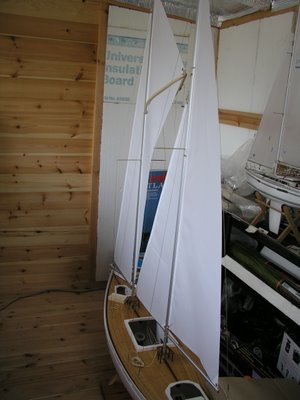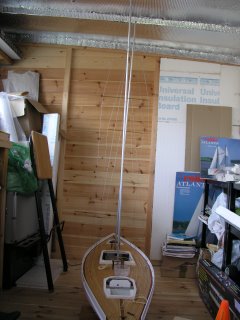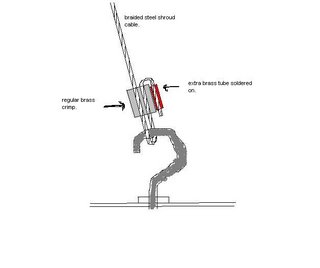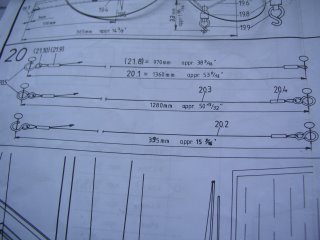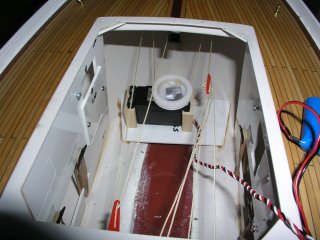Anchors away

A little more work on the Robbe Atlantis.
The anchor was assembled, and painted matt black, connected up to the winch chain, and hole drilled in deck for the chain hawse hole.. which is actually another eyelet :)
The anchor winch is positioned as per the plan and the the chain threaded through. Don't forget to seal the opening in the deck,with glue or silicone..
Attention then turned to the handrail section. Holes were marked, and drilled ( 2mm drill bit) as per the plan. I cut up some templates from an old deck strip, in 150mm, 90mm and 60mm lengths, marking up the holes is then easy to do.
The next stage involves feeding some 1mm brass wire through the lower stanchion holes and cut to length and soldered. However,the fun ( NOT) really starts with the top rail.

For some odd reason ( presumably strength ?) Robbe have supplied 1.5mm spring steel..
This is a ridiculously hard material to a) bend , b) cut and c) solder !
Cutting can only be done with an electric cutting disc... bending requires immense strength... and if you get that far... you won't be able to solder it to the brass stanchions anyway :(

I just don't see the need for this.. so I intend to order some 1mtr lengths of brass rod, to replace the upper railings.
At least , I shall then be able to cut, bend, and solder them !
I shall have to "jump" a little further along with the instructions, until the brass rod arrives.
Steve

